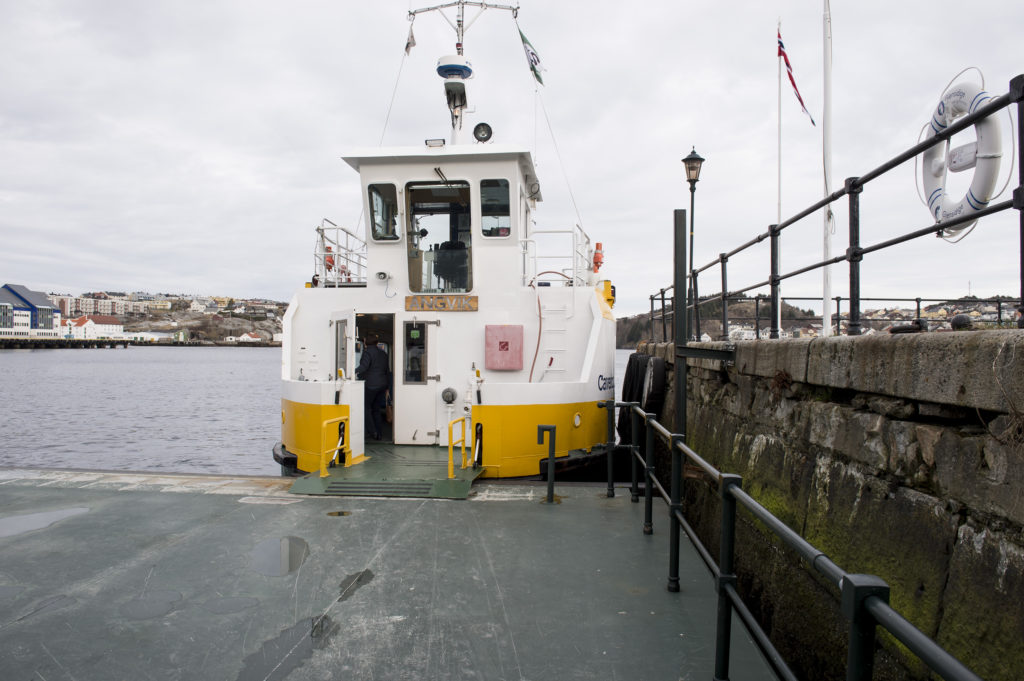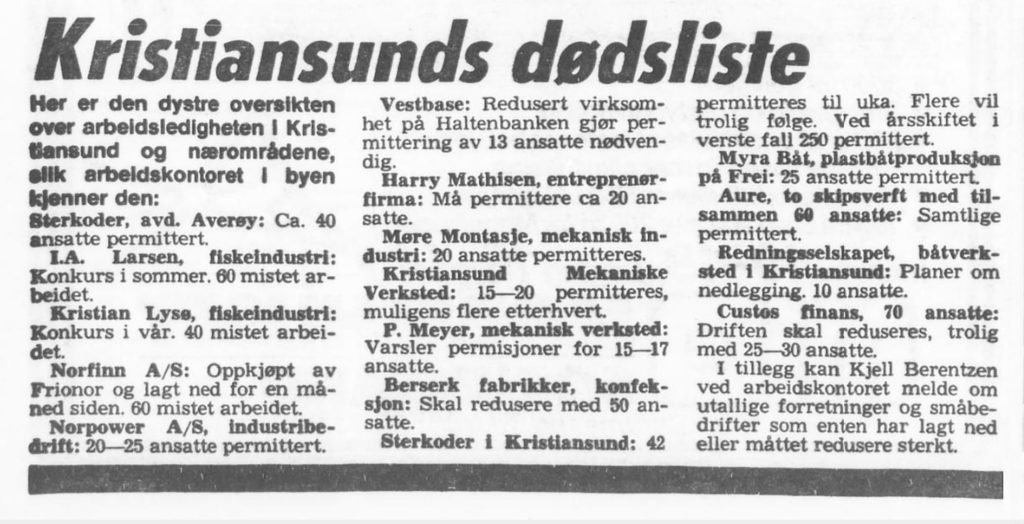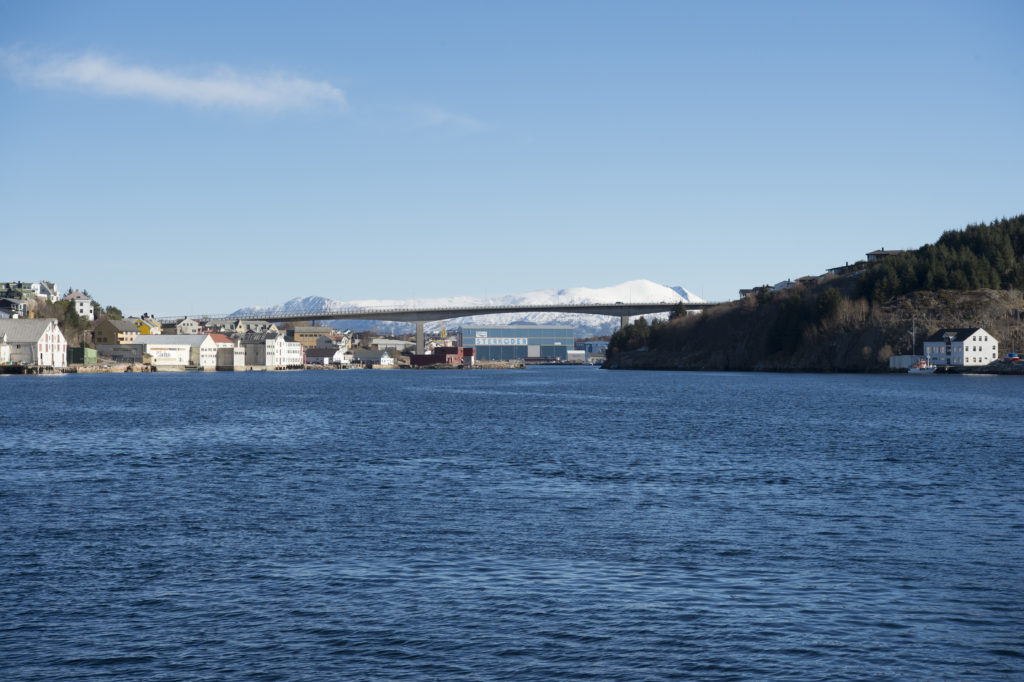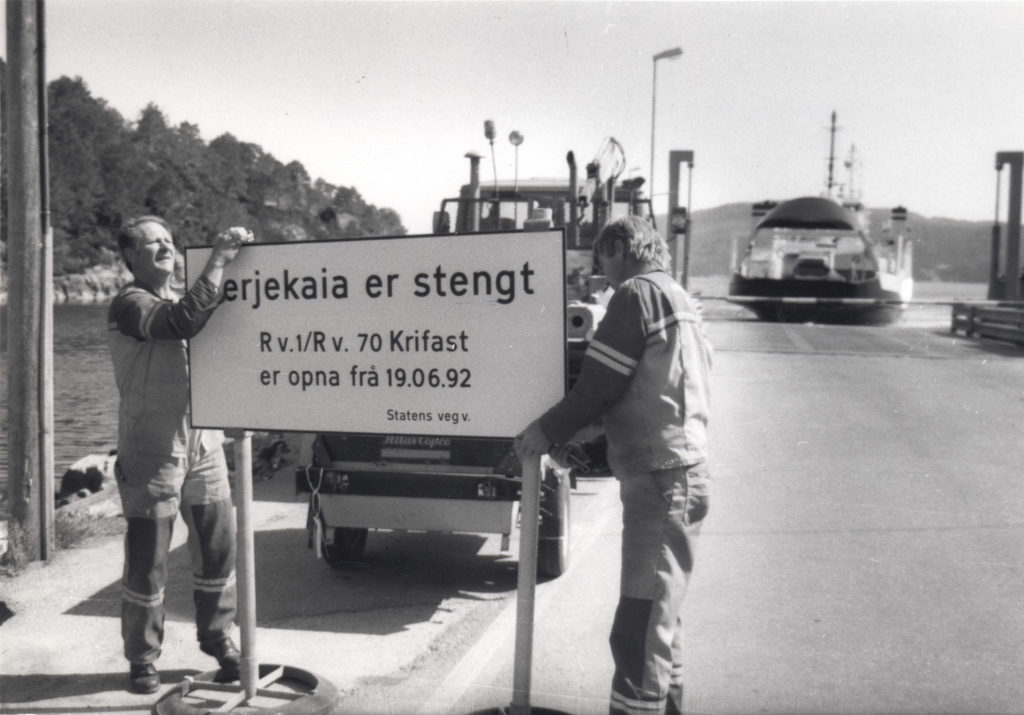Laying the ghosts

“Unemployment and despair are increasing month by month,” Jensen observed.[REMOVE]Fotnote: Dagbladet, 12 September 1988, “Skal vi bo i en spøkelsesby?” “No other town in Norway has more people out of work. Nobody seems to have noticed the crisis here except those directly affected. The clouds above are getting ever darker.”
His jeremiad was prompted by rising unemployment and constant new warnings of lay-offs and redundancies from Kristiansund’s business community. But it also formed part of an effort to get the government to pay attention to the town. The struggle over where Shell would place its Draugen operations organisation was still not over.
According to the mayor, only oil could save the community – along with bringing forward work on linking Kristiansund to the mainland, considered one of Norway’s largest highways projects. Both depended on the Storting (parliament), which was about to decide on the location of the operations organisations and supply bases for the Draugen and Heidrun fields.
Kristiansund was very hopeful of winning the battle, but the mayor’s gloomy picture of the town suggests victory could not be regarded as a foregone conclusion. It appears that the local council’s bleak tone was intended to put pressure on the Storting so that it would give Kristiansund favourable treatment.
 Kristiansunds tidligere historie, sundbåten, engelsk
Kristiansunds tidligere historie, sundbåten, engelskAt that time, the town was spread over three islands without a connection to the mainland. However, the Krifast project to establish such a link had already been approved. When the Storting gave it a green light in 1985, this ranked as one of Norway’s biggest communication schemes to date. That had naturally been welcome. But the problem was that construction work was not scheduled to start until 1990. Kristiansund wanted to force the pace as a means of boosting local employment.
Dramatic
The Norwegian labour market as a whole – and not just in Kristiansund – had taken a dramatic turn for the worse in 1988. Unemployment more than doubled during the year.[REMOVE]Fotnote: Eika, Torbjørn (1993). Reports: Norsk Økonomi 1988-1991: Hvorfor steg arbeidsledigheten så mye? Statistics Norway
This reflected several factors, but a key role was played by a general economic downturn. The position for jobs had not been so bad for more than a decade.
Kristiansund was among the towns to be hardest hit, with unemployment in September at 5.7 per cent and fears that it could reach 10-14 per cent. Only three small labour exchange districts elsewhere reported worse figures.
The town was used to cyclical fluctuations, having lived with them since it acquired municipal status in 1742. But this time the contraction was not confined to a single sector – “the misery is unfolding across the board,” as the mayor put it.
After buoyant times in 1982-85, the trend for Kristiansund’s economy had reversed. Pay rises and new investment had driven things astray, and the town’s ability to show restraint in boom times had failed to manifest itself. The council had spent heavily on construction, pushing its budget up from NOK 50 million to NOK 74.7 million and leading to a dramatic overspend in 1987.
Another unforeseen cost was the new collective pay deal negotiated between unions and employees. A 2.5-hour reduction in the working week to 37.5 hours had proved expensive. The council’s social services had also seen a big rise in demand, and cost overruns occurred in the central administration as well as in schools, health care and commercial operations.
Rosy adventure or dark nightmare
 skal denne byen dø, avis, faksimile, engelsk
skal denne byen dø, avis, faksimile, engelskNot everyone was pleased at the attention Jensen and Kristiansund had secured in the national media. Dagbladet, for example, had drawn up a “death list” of companies which had fired or laid off all or part of their workforce. The impression was that the end was near.
One of those who took a dim view of this was Asbjørn Jondal, a former mayor and now editor of local daily Tidens Krav. In a leader, he maintained that presenting Kristiansund as a town in crisis undermined its opportunities. He described the propaganda as “PR own goal of the worst kind”, and argued that the council leadership had deliberately given Dagbladet negative information as part of efforts to bring oil operations to the town.
The paper’s story had been written to order by the council and deliberately painted a gloomy picture, Jondal claimed. It was hardly attractive for new industry to set up shop in a town where the death rattle was drowning out hopeful arias.
While the media offensive was a conscious effort by the council to court central government, it is questionable whether enough thought had been given to the possible consequences.
The claims were in sharp contrast to the message communicated by the Kristiansund and Environs Marketing (KOM) board that March – in the form of an offensive in Dagbladet. Under the slogan: “Kristiansund – town of tomorrow”, this large-scale advertising campaign had aimed to persuade people to move to the town.
It claimed skilled personnel would be in great demand there in the future, and boasted of optimism in local industry and huge building work. “The one thing leads to the other,” it asserted.[REMOVE]Fotnote: Dagbladet, March 1988. It was also noted that Sterkoder, the town’s biggest shipyard and employer, had full order books and that Kristiansund could offer an exciting job market.
 Kristiansunds tidligere historie, engelsk
Kristiansunds tidligere historie, engelskIn other words, just months before the mayor’s horror story, the council had spent time and effort on marketing the town and its opportunities. That contrasts glaringly with the death list in the same paper six months later. This catalogue was topped precisely by Sterkoder, which had recently had to lay off 40 people. Although the company was struggling, like most other yards, it objected to being put on the death list and denied that it belonged there. A number of workers had admittedly been laid off, but the yard remained Kristiansund’s biggest employer.
Cry for help
The gloomy picture must be regarded as a cry for help from Jensen. But a number of people questioned why the council itself was not taking some action. The crucial importance of encouraging a varied commercial sector in Kristiansund was emphasised at an industry policy conference held there on 21 September 1988.
Oil would not be enough to save district and town, it was said. Pessimism was sharply rejected, with crisis maximisation failing to lead to anything positive.
Instead, Kristiansund had to highlight all available advantages and opportunities, particularly in the fishing sector and especially in fish farming.[REMOVE]Fotnote: Tidens Krav, 22 September 1988, “Oljen redder ikke Nordmøre”.
The oil price slump in 1986 should have given the petroleum optimists pause for thought, conference participants argued. Politicians as well as industry should grasp the need for change. Four drilling rigs were laid up in Kristiansund during 1987 – a sign of quiet times on the NCS. Exploration activity in the Norwegian Sea had declined, and the industry faced a downturn.
Crisis budget
Whatever side people found themselves on in the discussion over how Kristiansund should be marketed, most agreed that the town faced a crisis. That was clearly demonstrated when chief administrative officer Anton Monge presented his 1989 budget. The first draft envisaged savings of NOK 9 million. One proposal was to shut down the cultural department as an independent unit. The library would only open three days a week.
Monge also proposed cutting the council workforce by 55 work-years. A lot would need to be restructured, but he also had to ensure that the council did not suffer a financial shipwreck.
Three weeks later, he presented new shock figures which showed the need for a further NOK 11 million in cuts. Spending on social welfare had increased far more than allowed for in the budget. Cash grants and rent support had risen dramatically. New social security arrangements required extraordinary payments from the council.
The money was to be deducted from the council’s tax revenues, and the amounts involved had increased sharply when the central government budget for 1989 was presented.
In addition to general spending cuts and downsizing by the council, the deficit was to be covered by selling some of the council’s buildings and raising property tax.
Kristiansund was not the only local authority to be struggling in Norway. An economic state of emergency prevailed throughout the country.
To the rescue
Two days after the article prophesying a “ghost town” had appeared, local government minister Kjell Borgen promised help to Kristiansund. He aimed to put a stop to the negative trend. In its 1989 budget, the government decided to bring forward the Krifast project by a year so that work could begin in the spring of 1989.[REMOVE]Fotnote: Ministry of Transport and Communications. (1988) For budsjettermin 1989. Proposition no 1 (1988—89) to the Storting.
This was good news for Kristiansund. Such a big construction project would generate many new jobs and income for the local authority.
 skal denne byen dø
skal denne byen døThe Nordmøre district also hit the jackpot when the central government budget was presented on 4 October 1988. NOK 4.6 million was appropriated for extraordinary job creation measures, which meant work and training programmes for 500 people.
Frei and Averøy local authorities came off best, while Kristiansund got little because it could not afford to meet its share of the cost. The government took the view that the council had done too little to help get people into work. But even crises come to an end. In December 1988, Kristiansund was chosen as mid-Norway’s oil centre, with the supply base for Draugen and Heidrun and the Draugen operations organisation. And the bridging and tunnelling work designed to connect the town to the mainland indeed got under way the following spring.
Perhaps the best Christmas present the town could have got arrived on 23 December, when Sterkoder secured a contract worth billions of kroner for 15 trawlers.
That meant the future looked bright for the company, for the 700-800 people who could expect jobs – and for the council’s tax revenues. The “ghost town” was headed for brighter times, Jensen told Tidens Krav’s readers on 29 December 1988.
The unique Draugen platformBuilding an operational presenceThe “ghosts” have been driven away. In their place come oil bases, the operations organisation for the Draugen field, a connection to the mainland, the Averøy tunnel. Cornerstone company Sterkoder is assured of full employment for four years to come. Not even spending on the winter Olympics in Lillehammer [in 1994] can compare with the investment to be made in the Kristiansund district over the next few years. People will now be getting back into work.[REMOVE]Fotnote: Tidens Krav, 29 December 1988, “Harde tider, men bedring i sikte”.
